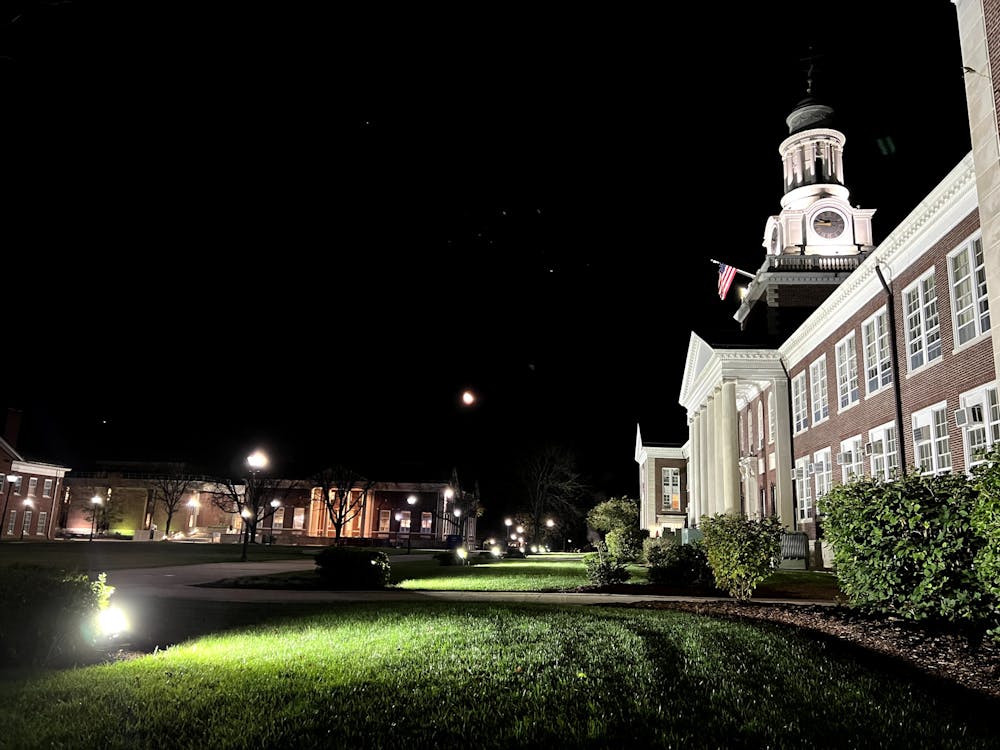By Delmis Vargas
Correspondent
The College’s undergraduate student population is overwhelmingly white, with the breakdown being 60% white, 17% Hispanic/Latino, 11% Asian and 5% Black/African Americans.
Being a minority at a predominantly white institution, commonly referred to as a PWI, can come with many challenges, fears and disadvantages. These challenges sometimes arise right after arriving at campus, due to factors such as culture shock.
“At first it was a little bit jarring coming from a place that was very diverse, and it was a little uncomfortable,” said junior kinesiology major Tyrese Gilbert.
Many students of color at the College come from diverse areas, and the stark changes in environment and diversity can be overwhelming and add to the pressure of fitting in and finding community. This can manifest itself differently in every person of color’s college experience at a PWI.
“I think being on a team (track and field) and dorming helped with community,” said Gilbert. “I feel more comfortable now that it’s my third year, and it was easier to acclimate than I thought it would be.”
Although some may not have trouble finding community, it may not be the same for others.
“You can attend classes, do all the things that you’re supposed to do, and by every college metric, you fit in, but in the larger sense of being able to build a community around yourself, you can’t do that,” said Aayush Gandhi, a junior biology major.
Aside from the struggle of finding a comfortable place and being welcomed in, there is sometimes a disconnect when it comes to having shared experiences, or rather a lack of shared experiences.
It can be exhausting for students of color to have to translate an experience to a non-POC that cannot understand it, because they have not had to face those race or ethnic-related struggles.
“It can feel isolating sometimes, when no one sees anything from your perspective, you can feel alone,” said Omar Roldan, sophomore finance major. “It’s hard finding people that relate to the struggles I go through, and when I try to explain, I feel like they don’t really understand.”
Additionally, the small class sizes at the College can increase that disconnect and turn real life issues that POC face into debates.
“[I’m] consistently noticing that I’m the only person that looks like me in a class,” said Gilbert. “Then I feel kind of small in a class, and I notice it; it feels off.”
Not only can being the only person of color in a classroom make POC students feel uncomfortable, but when issues that they or people of their community have faced arise as a topic of debate, it can become dehumanizing.
“You go to a class about racial violence and to learn about the issue to do a deeper dive on how it impacts society, and at a PWI, you’re almost forced into a ridiculous defense of ‘hey, maybe racial justice does exist in a primarily white society’,” explained Gandhi.
Etsub Gezahagne, a sophomore biology major, said that while instances like these can be emotionally taxing for POC students, there are clubs and organizations that can help students of color feel more comfortable and welcome.
“I’m a Bonner scholar and within Bonner it’s very diverse, a lot of my friends are in it, and Bonner’s events show a lot of different perspectives; it is very intersectional,” said Gezahagne. “I feel like I belong.”
Although student-run organizations such as BSU, NAACP, Union Latina and many more have helped elevate POC voices and bring students of color together, there is still the question of what the College itself can do to support POC.
“If there’s more diversity in the rate of professors, then students can relate more to the professors,” said Gezahagne. “There’s like a disconnect in what you’re trying to experience and what you’re trying to learn.”
“I feel like they could do more to ensure that POC voices or concerns are voiced,” said Roldan. “When you’re voicing your opinions from something that doesn’t affect you, it’s coming from a privileged point of view.”
Although the College may have a long way to go to make POC voices heard, that doesn’t take away the pride that being a POC at a PWI has.
“I feel it’s a special thing,” said Roldan. “It's definitely an eye-opener to what the real world is. You see new experiences, and it prepares you for what’s actually out there. It’s definitely a sign of strength, in my opinion.”
“There’s so much history and emphasis on your culture, on your shoulders lie hundreds of years of culture and you’re bringing that to [the College], and the merging and mixing of them is something I really, really like to see,” said Gandhi.
While many students of color have expressed a mixture of positive and negative experiences, regardless of what those experiences are, it is crucial for POC students to feel safe in a place that they call home and be able to freely express their history, culture and who they are as individuals.







